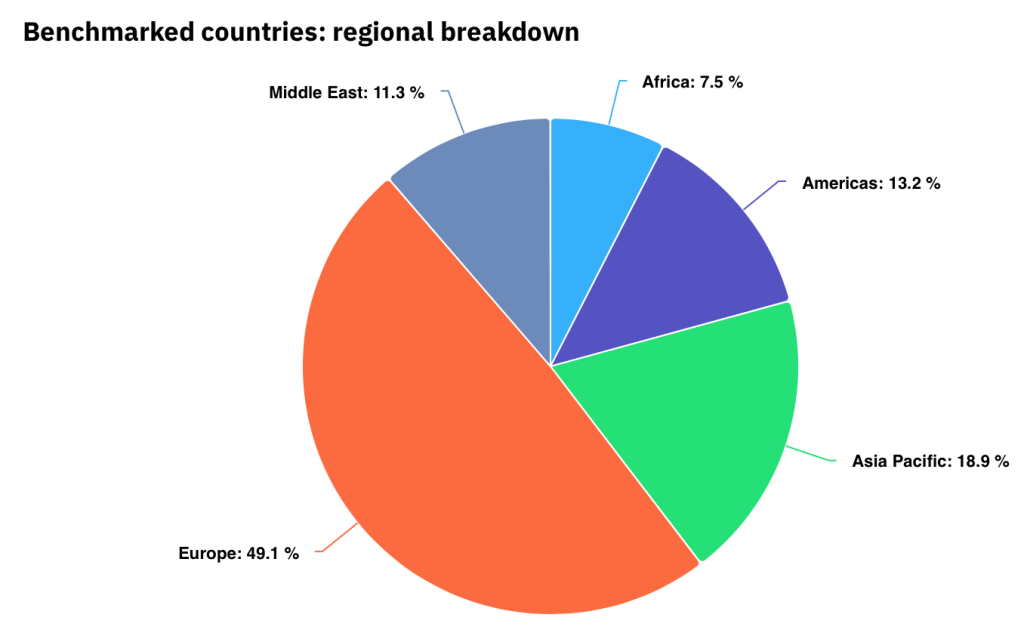Europe leads the way in private networks
One of the key findings of our private networks benchmark update is that Europe is making good progress.
Since PolicyTracker’s previous private networks benchmark, published in June 2023, there has been a great deal of activity across Europe. New assignments are planned in countries that have already released spectrum for private use, several nations are moving from the planning stage to the assignment stage, and a further set of new countries in the region are entering the fray.
Europe accounts for 49 per cent (26) of all the countries assigning or planning to assign spectrum for private networks. Next are Asia Pacific and the Americas with 10 and seven countries respectively. Nations in the Middle East represent 11 per cent of the total (up from five per cent in 2023), while Africa accounts for eight per cent (up from five per cent in 2023).

The work carried out by CEPT, Europe’s key telecoms organisation, will probably be very influential in the drive to develop private networks further in the region. Earlier this year, after agreeing on the coexistence between altimeters and private networks in the 3.8—4.2 GHz band, CEPT’s Electronic Communications Committee finalised its studies of the technical aspects of harmonising the 3.8—4.2 GHz band for private mobile networks.
CEPTCEPT stands for the European Conference of… then launched several consultations on the regional harmonisation of the 3.8-4.2 GHz band.
By the end of 2024, CEPT is expected to define and adopt harmonised least restrictive technical conditions for the range and a European Commission implementing decision for the 3.8—4.2 GHz band could be adopted by the end of 2025.
The updated Private Networks Benchmark, including research notes, maps and data, is available to Spectrum Research Service subscribers here.
